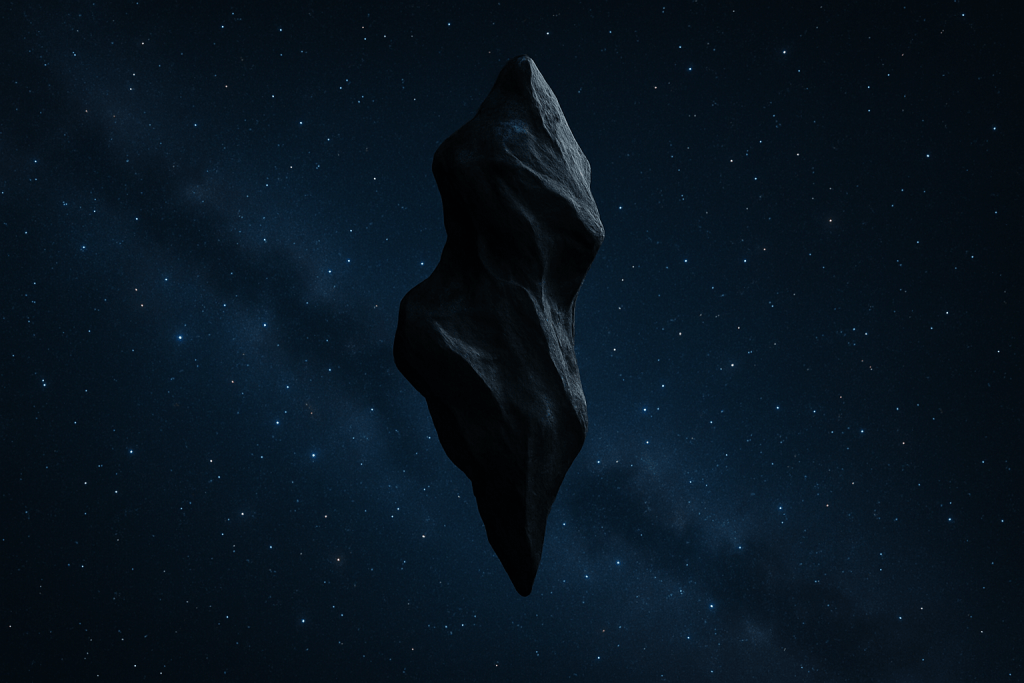The Far Side of the Moon

For decades, the far side of the Moon was a symbol of cosmic mystery — a dark, silent hemisphere forever hidden from Earth’s view. Unlike the near side, which has been mapped, landed on, and broadcast around the globe since the 1960s, the far side remained untouched, unvisited, and ominously quiet.
Then, in 2019, China’s Chang’e-4 lunar mission changed everything. For the first time in human history, a lander and rover successfully touched down on the far side of the Moon. It was a scientific milestone, but also — for those who watch the skies with suspicion — a moment of deepening intrigue.
What did China really find out there? And why are so many details buried beneath sterile press releases?
A Landing in the Shadow
Chang’e-4 didn’t land just anywhere — it set down inside the Von Kármán crater, part of the massive South Pole–Aitken basin, one of the largest and oldest impact structures in the solar system. The crater itself is roughly 186 kilometers wide, its floor cloaked in fine, ancient regolith.
The rover, Yutu-2, began exploring the area almost immediately. Official state media released early images: a gray, dusty landscape, strewn with rocks and shadows. But then came the first anomaly — something out of place.
The Mysterious “Gel-Like” Substance
In August 2019, Yutu-2 stumbled upon a strange, brightly colored substance inside a small crater. The Chinese space agency described it as “gel-like”, a term that sparked instant global attention.
Speculation erupted. Was it melted glass? Synthetic material? Biogenic residue? The photos showed a substance that appeared darker and shinier than the surrounding lunar soil — odd considering the Moon’s dry, frozen environment.
China offered a vague explanation: it could be impact melt, caused by a meteorite hitting the surface and liquefying local rock. But the phrasing, tone, and delay in data release led many to suspect more was being concealed.
Biological Containment Protocols?
Leaked chatter from amateur radio intercepts and Chinese forums hinted at something rarely associated with lunar missions: containment procedures.
Rumors swirled that once the substance was found, the mission team remotely reprogrammed Yutu-2’s path to avoid direct contact. The rover’s instruments, including a ground-penetrating radar and visible/infrared spectrometer, reportedly ran a limited scan — but no detailed findings were released publicly.
Was this over-caution? Or did the mission encounter something outside normal parameters?
Unusual Geological Formations
Beyond the “gel,” the rover documented unusual rock formations — jagged spires, perfectly split stones, and curious patterns in the regolith. Chinese scientists claimed these were consistent with the Moon’s volcanic and impact history.
But independent analysts noted how similar these formations were to structures in Earth’s deserts that are often mistaken for ruins. While no one in the scientific community openly claimed artificial origin, the photos quietly reignited old conspiracies about ancient structures on the Moon.
Censorship and Radio Silence
Perhaps the most suspicious part of the Chang’e-4 story is how little coverage it’s received since. After initial headlines in 2019 and early 2020, updates slowed dramatically.
China’s National Space Administration (CNSA) stopped issuing regular image dumps. Most data released has been processed and filtered, with almost no raw telemetry available. The excuse? “Scientific integrity.” Critics argue it’s deliberate censorship, and that unexplained anomalies are being buried beneath bureaucratic silence.
Theories and Possibilities
So, what did China’s rover really find? Here are the dominant theories circulating in the uncut corners of the web:
- Theory 1: Exotic Impact Melt
The gel-like substance was genuinely impact melt, but it contained rare-earth elements or unknown compounds that China doesn’t want to disclose. - Theory 2: Extraterrestrial Biomatter
A radical idea: the substance had organic or even microbial traits, prompting emergency containment and data suppression. - Theory 3: Technological Debris
It may have been non-Chinese hardware, perhaps remnants of a classified U.S. experiment, Soviet probe, or something… older. - Theory 4: Just a Rock (but the secrecy is real)
The substance might be mundane, but China’s secrecy fuels conspiracies more than the material itself.
Final Thoughts
The far side of the Moon remains one of the most mysterious landscapes in our solar system. China’s Chang’e-4 mission cracked open the door, but rather than illuminating the unknown, it seems to have cast deeper shadows.
As long as raw data is withheld, as long as strange findings are couched in vague terms like “gel-like,” and as long as the public is locked out of space exploration’s most critical frontiers, the questions will persist.
What’s really on the far side of the Moon?
And who decides what we’re allowed to know?

